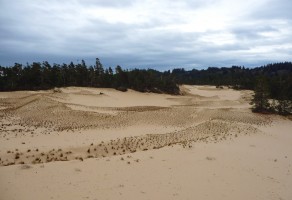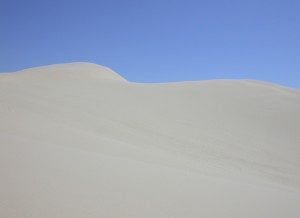Only 5% of the original red fescue plant communities, like this one, remain on the Oregon Dunes
The Siuslaw National Forest is proposing to decrease the trail-only access by increasing the cross-country acres. The trail-only access is currently through vegetated areas that needed protection from motorized use due to sensitive, native and rare plant communities. 966 acres of this would be moved to "open" cross-country use by motorized vehicles under Alternative 5, the most extreme proposal. Alternative 4, the Forest Service's preferred proposal, will increase cross-country motorized recreation by 455 acres.
While some of the proposed transfers make sense, most do not. Many vegetated and sensitive areas on the Dunes have had extensive motorized damage because the Siuslaw National Forest has not enforced their 1995 management plan. Some of these areas can be moved into legal motorized access without fear of further damage, but most should be restored to serve their original intent, to protect rare and globally significant plant communities on the Oregon Dunes.
For instance, realloctions A4 and A5, near Horsfall and Beale Lake should not occur, as these are near some of the Oregon Dunes Globally Significant plant communities. That is: a plant community that is imperiled globally because of rarity (less than 20 occurrences) or because of some factor(s) making it especially vulnerable to extinction throughout its range, such as threats from motorized recreation.
Scientists say the lakes on the Oregon Dunes "are unique because of their large size… dominated by pond lily, floating-leaved pondweed, water-shield and hardstem bulrush. Several lakes contain water clubrush, an uncommon plant species, and extensive populations of the insectivorous bladderwort. The lakes host large concentrations of waterfowl during the migration season.”
Other proposed tranfers, from protected vetetation to cross-country motorized use, called A2, A12, A13, A14 and A16, are too large and should not occur. Instead, these areas should be surveyed for rare plants, lichens and wildlife, and then restored to their native state.
Please take action before December 8, 2012.

